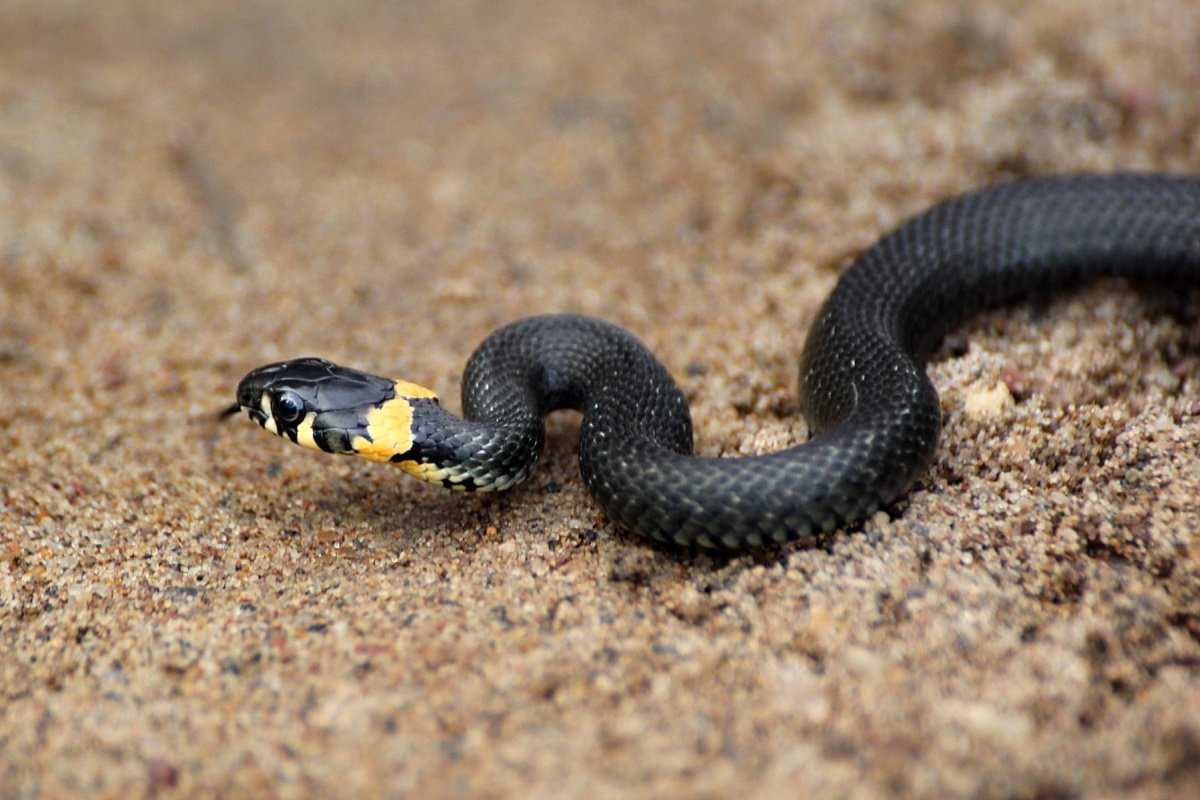Grass snakes are among the most widespread and recognizable snakes in the world. They can be found in forests, meadows, near bodies of water and even close to human settlements. Although they sometimes evoke fear, these reptiles pose no threat to humans because they are non-venomous. Their behavior, appearance and way of life hold many surprises. That is why in this article you will find interesting facts, incredible facts and fascinating facts about grass snakes that you may not have known.
- Grass snakes belong to the family Colubridae, and there are more than 200 species of these reptiles worldwide. They can be found on almost every continent except Antarctica. Each species has its own unique characteristics of appearance and behavior.
- The most well-known species in Europe is the common grass snake. It can easily be identified by two yellow or orange spots on the sides of its head. These markings help distinguish it from other snakes.
- Grass snakes are excellent swimmers. They can stay in the water for long periods, move quickly and even hunt for fish. This is why they are often found near rivers, lakes and ponds.
- Grass snakes feed mainly on amphibians such as frogs and newts. They are also capable of catching fish, small rodents and bird chicks. Their ability to swallow prey whole is a typical trait of all snakes.
- Grass snakes are completely non-venomous. They do not pose a danger to humans and usually try to escape when encountered. If they feel threatened, they may hiss or play dead.
- When in danger, a grass snake can release an unpleasant smell. This is a defense mechanism that helps to repel predators. In this way they increase their chances of survival.
- The body length of grass snakes usually ranges from 70 centimeters to 1.5 meters. Some species can even exceed two meters in length. Females are typically larger than males.
- The active season of grass snakes occurs in spring and summer. In winter they hibernate, gathering in groups in burrows or under tree roots. Such clusters may consist of dozens of individuals.
- Grass snakes are oviparous reptiles. A female lays between 10 and 30 eggs in a warm and humid place. Young snakes hatch after about two months.
- In nature, grass snakes play an important ecological role. They regulate populations of frogs, rodents and fish, maintaining balance in ecosystems. Their absence could lead to disruption of this balance.
- Grass snakes can live up to 10–15 years in the wild. In captivity, with proper care, their lifespan can be even longer. Longevity depends on environmental conditions and the presence of predators.
- In many cultures, grass snakes held symbolic meaning. In Slavic traditions they were often associated with protecting the home and were considered sacred animals. In some legends they acted as guides between worlds.
- Grass snakes are highly adaptable. They can be found in forests, steppes, mountains and even urban areas. They live wherever there is enough food and access to water.
- Unlike many other snakes, grass snakes are active during the day. They bask in the sun, search for food and move about actively. This makes them more visible to people.
- Young grass snakes are completely independent from birth. They immediately start searching for food and adapting to their surroundings. There is no parental care among them.
- Grass snakes have a well-developed sense of smell and the ability to detect ground vibrations. They flick their tongue to collect scents from the air and surfaces, which are then analyzed by a special organ in the mouth. This helps them navigate and locate prey.
- Grass snakes are capable of playing dead. When threatened, they roll onto their backs, open their mouths and remain motionless. This behavior confuses predators.
- Grass snakes are sometimes mistaken for vipers. The main differences are the shape of the head, the form of the pupils and the presence of characteristic yellow spots. Unlike venomous vipers, grass snakes always try to avoid contact with humans.
- In the wild, grass snakes have many enemies. Hedgehogs, birds of prey, foxes and even large frogs may hunt them. Despite this, their population remains stable thanks to their ability to reproduce quickly.
Grass snakes are extremely fascinating representatives of wildlife that hide many secrets. They play an important role in maintaining ecological balance and deserve respect. Such interesting facts, incredible facts and fascinating facts allow us to better understand these unique reptiles. You may not have known many of them, but now the world of grass snakes has revealed itself to you from a new perspective.





